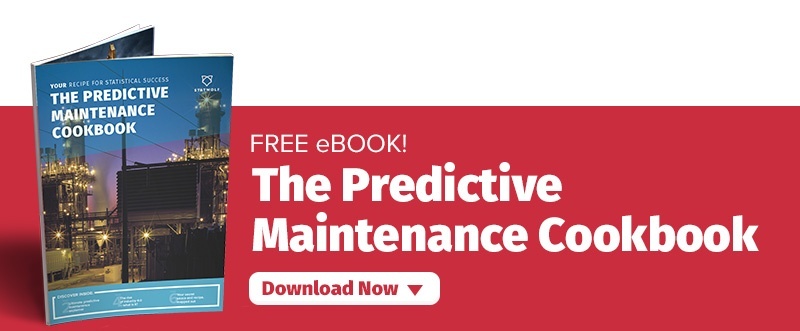Big Data for small business: why crunching the numbers matters
Did you know that 90 percent of all digital data has been generated in the past two years, but only one percent of it has been analysed? According to Management Consultants McKinsey, we’re all swimming in a sea of Big Data.
As a term, Big Data is generally taken to mean the large volume of information that your business gathers every day – through your CRM, your analytics tools, your sales software and myriad other sources. But the data itself isn’t the issue: it’s what you do with it that matters, and as McKinsey points out, lots of businesses aren’t doing enough.
That’s starting to change as new tools and processes emerge alongside advanced marketing dashboards and machine learning. And because smaller, newer companies often have cultures that lend themselves to innovation, they have an advantage over conservative, slow-to-move corporate players.
The value of using a tool like Statwolf to manipulate Big Data for a smaller, more agile business is the opportunity it gives you to see trends and patterns and react to them.
Some of the ways you can work with your data include:
- Cross-referencing internal information-pricing histories.
- Analysing customer traffic patterns.
- Reducing costs by eliminating inefficiencies and human bias.
- Strengthening client bonds by anticipating clients' needs.
- Enriching service offerings with new knowledge.
These are just some of the options available to anyone looking to harness the power of Big Data for their business. Because each business has a unique set of needs, Statwolf’s team designs custom services for each of our customers. We’ll analyse the information you’re generating and following on from that, our team of data scientists will design an algorithm to help you gain the best insight into what’s really going on in your business.
But how does Big Data in a small business setting work in practice? One example of a family firm using Big Data is in the magnificently-named town of Duck in North Carolina where Twiddy and Company Realtors has been using analytics to change how it does business.
Big Data boosts holiday bookings by 10 percent
Twiddy and Company manages tourist rental properties along the Outer Banks islands, and had years of spreadsheet data containing insight about peak booking periods, price history and the most popular properties. The familiar problem wasn’t the data; it was how to use it.
Ross Twiddy, marketing director, told Inc that, “we kept running into the same obstacles. Unless we had a good way of looking at the data, how could we make good decisions?"
Twiddy and Company settled on business analytics tools which broke down the company's data into an easily-digestible format that it could share with homeowners and contractors.
Before using Big Data analytics, Twiddy and Company was restricted in the information it could give homeowners: primarily the range of dates when their property was vacant. Now though, Twiddy and Company can offer specific pricing instructions to the homeowners based on market conditions, seasonal trends, and the size and location of a home, among other criteria.
Acting on Big Data analytics
One trend which became apparent was the significant drop-off in bookings after the 4th of July weekend. Usually summer rates were priced the same (i.e. the same set price applies from May to August each year).
Based on the data, the company advised its homeowners to drop prices for the weeks after July 4th. Bookings increased by 10 percent – and there was an increase of 10 percent in homeowners who wanted the company to manage their properties.
Twiddy and Company also cut costs by 15 percent by comparing each contractor's maintenance charges against the average of its 1,200 other vendors, identifying and eliminating invoice processing errors, and automating service schedules.
Those savings alone freed up $50,000 in the company's budget over the past two years – which was a significant profit on the $40,000 Twiddy and Company invested in its Big Data tool in the first place.
“There's truth in numbers, and […] software helps you find it,” Ross Twiddy explains. “When we saw that happen for us, it was like tasting ice cream for the first time. It's something you never forget.”
It’s clear that Big Data allows small businesses to change quickly and to capitalise on otherwise untapped potential in their industry. That’s a problem Statwolf has consistently solved for its customers. Our team of data scientists work with the data our clients are producing and then design a Big Data solution to allow them to see the hidden trends that don’t emerge from a cursory glance at a spreadsheet.
“There’s a very common belief among small and medium businesses that they’re not ‘big enough’ to exploit their big data potential,” says Simone Pampuri, CEO of Statwolf. “In reality, it should be the opposite: small businesses have leaner processes than big corporations which makes data collection, harmonisation, and integration phases significantly faster. Big Data is the competitive advantage for small businesses – like David’s sling against Goliath.”
Speak to the experts
At Statwolf, we’ve helped many small businesses gain maximum advantage of their data. Our team of data scientists has used a range of custom services to suit our customers’ needs including: advanced data analysis and modelling, custom algorithm creation and implementation as well as predictive maintenance.
Our advanced data science consultancy can work with you to interpret your data and make your business more efficient so get in touch today to unleash your business’ potential.
Want to make sense of your data? Download our comprehensive guide: The Pedictive Maintenance Cookbook.



